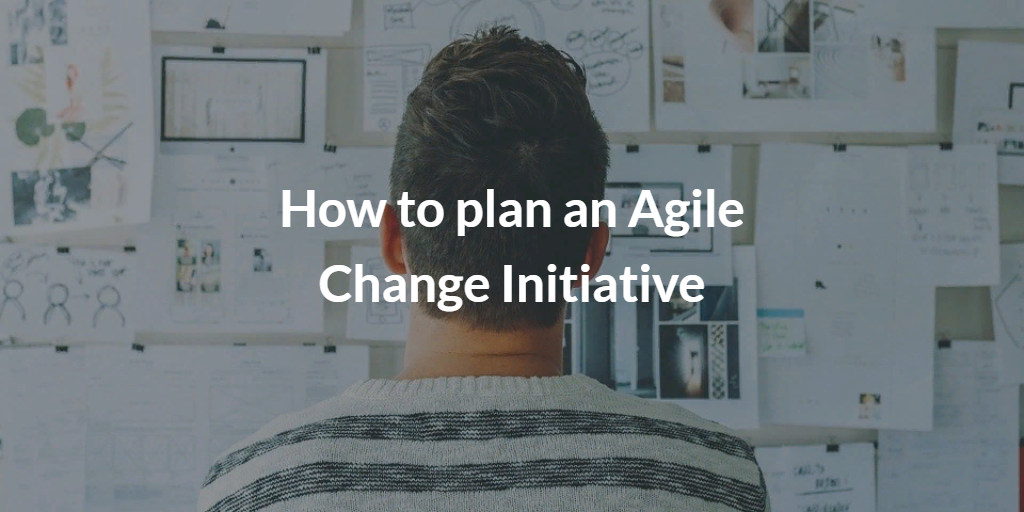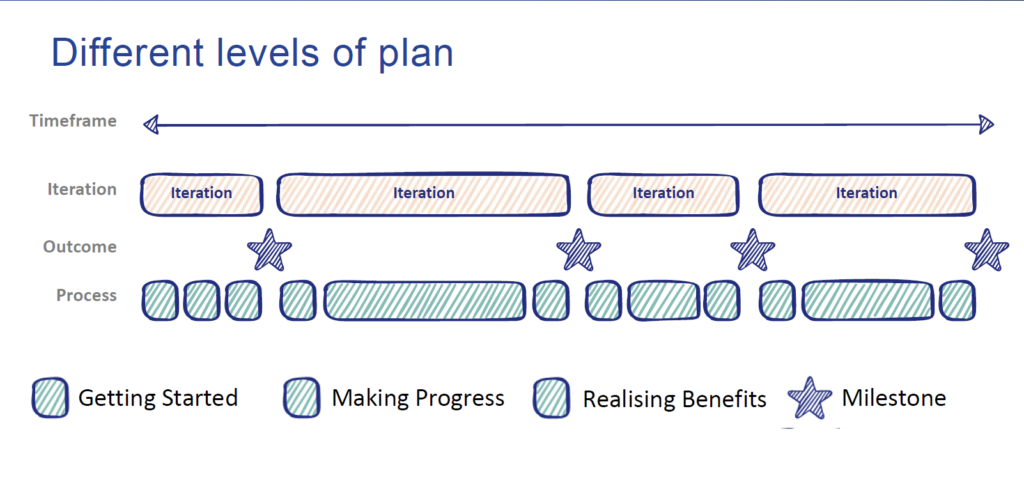How to plan an Agile Change Initiative?

During the interview with Mélanie Franklin, Co-Chair of the Change Management Institute UK, she highlighted how important it is to manage change in an Agile environment.
The changes in Agile are complex and continuous. In an Agile environment, innovation is continuous which will take other processes out of practice. Due to this, changes are complex and become more frequent as time passes.
Past changes soon become part of the ‘business as usual’. In this post, we will provide you with the expert’s advice and techniques to help you plan your change in Agile.
How to plan Agile?
Agile talks about evolving solutions, which basically means that within Agile you constantly have to re-plan.
Instead of planning just the next step, in Agile planning is done looking at the final goal.
It is important to understand the destination so one can orient the route to get there.
In this way, it becomes easier to define the things that will really help to achieve the final goal. The work to be done is decomposed in a decomposition scheme, where the final goal is divided into small components.
Decomposing the work to be done, means to look at the project from a bottom-up approach. Seeing these small components, it becomes easier to prioritise, identify the timespan, resources and communicate to the business.
In Agile planning is a team responsibility, all resources are involved so that they can actively contribute to the planning. The driving question to Agile planning is ‘are we really doing the most relevant thing to achieve our final goal’?
Planning in Agile is something extremely difficult and constantly changing. The planning starts high-level, by defining the desired destination. Step by step, by questioning the usefulness of undertaken actions, Agile takes you to plan more and more detailed. With Agile the level of detail grows progressively.
Behavioural change: what is it and why is it important?
One of the biggest challenges in Agile planning is taking into account behavioral change. Resources are not robots and any type of change will impact their way of working. For example, employees can lose familiarity with their work or need time to understand new techniques and/or systems.
The transition activities take time and there needs to be room to make mistakes and to practice new ways of working. This means that while planning, not only emotional effects must be taken into consideration, but also the overall change acceptance.
Together with project activities, it must be made sure that the resources are ready for new activities, new ways of working and that they understand the final goal. However, it often happens that technical activities develop much faster than behavioural change.
Melanie Franklin identifies the three elements of behavioural change; test new ways of working, understand how to do things and create new habits.
Attention should be both on the project activities as well as on the behavioural change.
These two should be synced in order to avoid resources not being able to use new features or practices.
Therefore at the end of each iteration phase, there must be an agreement on how the current and upcoming change will be managed. This is a collaborative activity because it involves both those responsible for the outcome as well as the users.
The importance of punctual delivery
Respecting the set timeframe for product deliveries means knowing when change can be expected and when improvements should start being visible. Sharing the activities and meeting deadlines also means answering the expectancies of the resources on the new way of working.
It is important to respect delivery promises because change is always a source of stress; delay could increase the emotional impact of the change. Respecting the set timeframe is therefore fundamental.
But how to decompose the total timeframe? M. Franklin suggests different levels of planning, see the image below.

The first element is the timeline exists of different iterations and at the end of each the outcome is identified.
In order to achieve these milestones, M. Franklin has identified the following steps to follow;
- Getting started
- Making progress
- Realising benefits
1 Getting started
This step is more or less a brainstorming session about all the activities that need to be done. In a real Agile environment, this would be called the ‘user story’. It is essential to cover both the ‘delivery’ and the ‘transition’ parts of the change management activities. This activity is collaborative and therefore an opportunity for everyone involved to understand the approach to work and timing.
2 Making progress
It includes all the changes in the working procedures, both technical and changes in ways of working. At the end of this step, the parts of work are reviewed and the elements of change are assessed on their quality and effectiveness.
3 Realising benefits
The final step is used to analyse the output so far. Benefits are taken into use and all that is no longer needed is eliminated. This step is also important to include all resources and to make room to thank them for the work that has been done. This creates a motivating environment for all team members.
These steps offer a repeatable structure for each iteration that can be used to plan the elements of your Agile changes.
Curious to know more?
Read the article: “Change and opportunities in Agile Change Management: Interview with Melanie Franklin”
SOURCE: How to plan and Agile change initiative, APMG International







